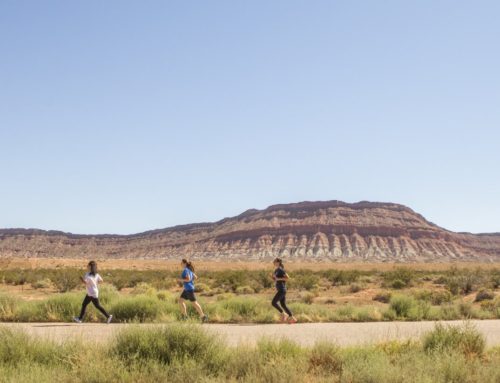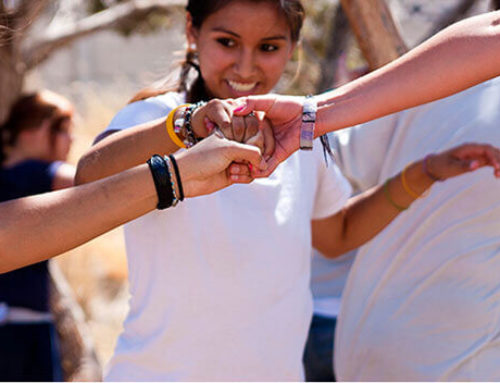If you’re new to the therapeutic world, you know that the number and variety of treatment programs for teens is dizzying. One category that is often misunderstood or confused with other treatment categories is wilderness therapy. This article provides a brief overview of the nature and function of quality wilderness therapy programs for parents considering that option for their teen.
What Wilderness Therapy Is
Classic wilderness therapy is a short-term residential style of treatment that leverages certain features of the wilderness to accelerate the treatment process. Typical wilderness programs utilize a brick and mortar base camp for initial intake, preparation and family therapy, and then take clients “on course”, meaning into the back country for an extended therapeutic backpacking experience. The wilderness context is so different from most teen’s normal day to day environment that it creates a sense of disorientation. This mild disorientation can be highly therapeutic because it creates a temporarily heightened state of vulnerability and openness. Young people become more dependent on others in an unfamiliar environment, especially when many of their normal coping tools (television, computers, peer groups, i-phones, etc.) are absent. This creates a window of vulnerability that allows field staff and wilderness therapists to engage the teen in therapeutic process very quickly.
Other therapeutic features of a wilderness setting include the intrinsic serenity, beauty, simplicity (lack of technology) of nature. Since everything from meal preparation to setting up camp requires everyone’s participation, the wilderness setting also fosters interdependence, positive peer relations and teamwork. Another therapeutic advantage of a wilderness milieu is that it provides a controlled environment free of extraneous distractions; this is useful for assessment and diagnosis.
What Wilderness Therapy Is Not
Many parents initially confuse wilderness programs with other types programs such as boot camps or extreme survival-based programs. Boot camps tend to be punitive in nature and include an intense behavioral approach to treatment; an approach that does not work with many, if not most, diagnostic profiles. Even when this approach does work in the controlled setting of a behaviorally-based program, results are difficult to sustain once the young person leaves that setting. Survival oriented programs are more focused on extreme experience and hard skill building than wilderness treatment programs. This approach can be effective with certain populations (such as adult substance abusers) when coupled with quality therapy and strong safety protocols, but may not be suitable for adolescents, trauma victims or other soft or fragile diagnostic profiles.
Wilderness programs, by contrast, are treatment focused, staffed by qualified wilderness staff and therapists and non-punitive. A good wilderness program strikes a balance between the intensity of the wilderness setting and a nurturing, team-oriented, safety-first approach.
Why Wilderness Therapy
Wilderness therapy is generally used on the front end of the treatment process to prepare the young person for long term treatment. Because wilderness programs provide a controllable and intimate setting with 24/7 clinical supervision, they are effective for stabilization when students are in crisis. This stabilization is an important first step in the treatment process. The short-term intensity of wilderness therapy also allows young people to jump into the therapeutic process quickly, gaining good momentum and therapeutic preparation for a long term program. Finally, the controlled environment of a wilderness program allows the treatment team to conduct close clinical observation. This observation is a critical part of assessment, diagnosis and treatment planning, and can therefore inform decisions about appropriate long-term treatment.
How Wilderness Therapy Fits Into Treatment
Typically, wilderness therapy is either the first or second step in a continuum of residential therapeutic care. Young people in deep crisis may first need to be hospitalized for stabilization or detoxification prior to enrolling in a wilderness program. Others go directly from home, either voluntarily or with the help of a youth transportation service. The second step in the continuum is typically a long-term residential treatment program, preferably one that involves the entire family in a systemic treatment process. Finally, a transition or aftercare program may be engaged to ensure that changes made in treatment survive the transition back into the family system and the real world. Some young people then benefit from a routine of regular, supportive outpatient services such as psychotherapy, mentoring or twelve-step groups.
What To Look For In A Wilderness Program
Good credentials are the hallmark of a good wilderness program. This pertains to staff members and the program itself.
Staff Credentials
The clinical team should be made up of qualified, master’s or Ph.D. level and/or licensed therapists. Field staff should have strong wilderness medicine and rescue training (CPR, first aid, wilderness first responder) as well as extensive outdoor experience. The extended team should include on-call members with strong medical and psychiatric credentials. All staff should be subject to a background check as a routine part of the hiring process. Look for a safety plan that includes highly accessible evacuation and emergency services and a reliable field communications system (e.g. satellite phones, tracking devices).
Program Credentials
Wilderness program accreditation’s vary, so it’s best to check and compare accreditation’s by referring to the accreditation standards of each specific accrediting body. Typical wilderness program accreditation’s include: JCAHO, BBB, and AEE. JCAHO is likely the most rigorous therapeutic accreditation that a wilderness program can have. Reputation is, perhaps, the most important credential a program can have. Talk to parents, educational consultants, residential programs and/or mental health professionals who have had direct experience with the programs you are considering.




